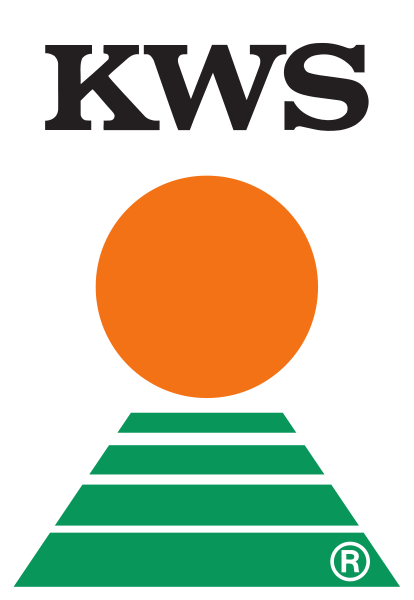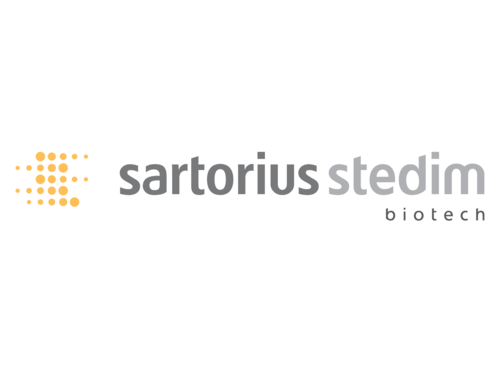Team:Goettingen/Safety
From 2012.igem.org
| Line 1: | Line 1: | ||
| - | |||
| - | |||
| - | |||
| - | |||
| - | |||
| - | |||
| - | |||
| - | |||
| - | |||
| - | |||
| - | |||
| - | |||
| - | |||
| - | |||
| - | |||
| - | |||
| - | |||
| - | |||
| - | |||
| - | |||
| - | |||
| - | |||
| - | |||
| - | |||
| - | |||
| - | |||
| - | |||
| - | |||
| - | |||
| - | |||
<html xmlns="http://www.w3.org/1999/xhtml" xml:lang="en" dir="ltr" lang="en"><head> | <html xmlns="http://www.w3.org/1999/xhtml" xml:lang="en" dir="ltr" lang="en"><head> | ||
| Line 41: | Line 11: | ||
<body class="mediawiki ns-0 ltr page-Team_Goettingen"> | <body class="mediawiki ns-0 ltr page-Team_Goettingen"> | ||
| - | |||
| Line 543: | Line 512: | ||
<font face="Verdana" size="-1"> | <font face="Verdana" size="-1"> | ||
<br> | <br> | ||
| - | Language: <img height="20", src="http://www.patrickreinke.de/igem/eng.jpg"> English, <img height="20", src="http://www.patrickreinke.de/igem/deu.jpg"> <a href="https://2012.igem.org/Team:Goettingen/Safety_deu">Deutsch</a> | + | Language: <img height="20", src="http://www.patrickreinke.de/igem/eng.jpg"> English, <img height="20", src="http://www.patrickreinke.de/igem/deu.jpg"> <a href="https://2012.igem.org/Team:Goettingen/Safety_deu">Deutsch</a> |
<br> | <br> | ||
| Line 563: | Line 532: | ||
<b>Researcher safety (organisms)</b> | <b>Researcher safety (organisms)</b> | ||
<br> | <br> | ||
| - | No, the organisms we are working with do not pose risk to anyone’s safety or health. We are using six <i>Escherichia coli</i> (<i>E. coli</i>) strains for our experiments: K12, DH10B, | + | No, the organisms we are working with do not pose risk to anyone’s safety or health. We are using six <i>Escherichia coli</i> |
| + | (<i>E. coli</i>) strains for our experiments: K12, DH10B, DH5?, BL21, XL1 blue, RP437 and MG1655. All of them are defined as level | ||
| + | 1 biosafety (S1) organisms by the German Regulation on Security Levels and Precautions at Genetic Predispositions | ||
| + | (<a href="http://www.gesetze-im-internet.de/gentsv/index.html#BJNR023400990BJNE001503320">view here</a>). The regulation specifies S1 | ||
| + | organisms as biological agents that are unlikely to cause diseases to healthy laboratory workers, animals or plants. | ||
<br> | <br> | ||
<br> | <br> | ||
| - | In our laboratory, the work with <i>E. coli</i> is only allowed under the sterile bench to avoid contamination and to minimize the risk of spreading. While working with the organism, it is the responsibility of all team members to wear lab coats and protective gloves. After working with E. coli, all contaminated utensils have to be autoclaved and the benches have to be cleaned with 70% ethanol. | + | In our laboratory, the work with <i>E. coli</i> is only allowed under the sterile bench to avoid contamination and to minimize |
| + | the risk of spreading. While working with the organism, it is the responsibility of all team members to wear lab coats and protective | ||
| + | gloves. After working with E. coli, all contaminated utensils have to be autoclaved and the benches have to be cleaned with 70% ethanol. | ||
<br> | <br> | ||
| - | Furthermore, S1 organisms are not able to survive under non-laboratory conditions, which prevents harm to the environment (according to <a href="http://www.gesetze-im-internet.de/gentsv/index.html#BJNR023400990BJNE001503320">www.gesetze-im-internet.de/gentsv</a>). | + | Furthermore, S1 organisms are not able to survive under non-laboratory conditions, which prevents harm to the environment (according |
| + | to <a href="http://www.gesetze-im-internet.de/gentsv/index.html#BJNR023400990BJNE001503320">www.gesetze-im-internet.de/gentsv</a>). | ||
<br> | <br> | ||
<br> | <br> | ||
<b>Researches safety (materials)</b> | <b>Researches safety (materials)</b> | ||
<br> | <br> | ||
| - | Yes. As every laboratory setting our laboratory also entails a few safety hazards. | + | Yes. As every laboratory setting our laboratory also entails a few safety hazards. |
<br> | <br> | ||
| - | We are using ethidium bromide, an intercalating agent, for staining DNA in agarose gels. We are aware of the fact that ethidium bromide is a mutagen and carcinogen. Therefore, the work with ethidium bromide is only permitted at a marked area in the laboratory and it is essential to wear nitrile gloves. The agarose gels containing ethidium bromide are disposed of in a specially marked container according to the rules of the Max-Planck Institute for Biophysical Chemistry. While working with ethidium bromide gels, it is necessary to wear a lab coat, nitrile gloves and a face protection to avoid UV damage. | + | We are using ethidium bromide, an intercalating agent, for staining DNA in agarose gels. We are aware of the fact that ethidium |
| + | bromide is a mutagen and carcinogen. Therefore, the work with ethidium bromide is only permitted at a marked area in the laboratory | ||
| + | and it is essential to wear nitrile gloves. The agarose gels containing ethidium bromide are disposed of in a specially marked container | ||
| + | according to the rules of the Max-Planck Institute for Biophysical Chemistry. While working with ethidium bromide gels, it is necessary | ||
| + | to wear a lab coat, nitrile gloves and a face protection to avoid UV damage. | ||
<br> | <br> | ||
| - | Furthermore, a risk while working with agarose is boiling retardation. In order to minimize this risk, every student has to wear special heat-stable and thick gloves. | + | Furthermore, a risk while working with agarose is boiling retardation. In order to minimize this risk, every student has to wear special |
| + | heat-stable and thick gloves. | ||
<br> | <br> | ||
| - | Moreover, the work with polyacrylamide gels for SDS-PAGE experiments contains a risk of coming into contact with carcinogens. Similar to ethidium bromide, it is always necessary to wear nitrile gloves. | + | Moreover, the work with polyacrylamide gels for SDS-PAGE experiments contains a risk of coming into contact with carcinogens. Similar to |
| + | ethidium bromide, it is always necessary to wear nitrile gloves. | ||
<br> | <br> | ||
| - | Antibiotics represent another risk for researcher. The concentrations of the antibiotics are relatively low in our experiments and gloves have to be worn as well. | + | Antibiotics represent another risk for researcher. The concentrations of the antibiotics are relatively low in our experiments and gloves |
| + | have to be worn as well. | ||
<br> | <br> | ||
| - | It is necessary to guarantee emergency service; therefore there are always two or more students present in the laboratory. Additionally, during the S1 security instruction, we were introduced to the emergency and eye shower and the emergency exits. The risk of a fire through the Bunsen burner is very low. In case of a fire, an alarm signal would start immediately. | + | It is necessary to guarantee emergency service; therefore there are always two or more students present in the laboratory. Additionally, |
| + | during the S1 security instruction, we were introduced to the emergency and eye shower and the emergency exits. The risk of a fire through the | ||
| + | Bunsen burner is very low. In case of a fire, an alarm signal would start immediately. | ||
<br> | <br> | ||
<br> | <br> | ||
<br> | <br> | ||
| - | <b>2.) Do any of the new BioBrick parts (or devices) that you made this year raise any safety issues? If yes, did you document these issues in the Registry and how did you manage to handle the safety issue?</b> | + | <b>2.) Do any of the new BioBrick parts (or devices) that you made this year raise any safety issues? If yes, did you document these issues |
| + | in the Registry and how did you manage to handle the safety issue?</b> | ||
<br> | <br> | ||
<br> | <br> | ||
| - | No. The biobrick parts we created do not equip our model organisms with further abilities, but they improve the already existing ones. All parts conform to the already mentioned principles on security levels and precautions provided by the German Federal Ministry of Justice (view <a href="http://www.bmj.de/EN/Home/home_node.html">here</a>). | + | No. The biobrick parts we created do not equip our model organisms with further abilities, but they improve the already existing ones. All |
| + | parts conform to the already mentioned principles on security levels and precautions provided by the German Federal Ministry of Justice | ||
| + | (view <a href="http://www.bmj.de/EN/Home/home_node.html">here</a>). | ||
<br> | <br> | ||
| - | However, the subsequent application (e.g. in the field of medicine) of our modified organism might demand further safety precautions. The introduction of <i>E. coli</i> to the human body induces a strong immune response due to the presence of Lipopolysaccharides (LPS) at the bacterial surface. To avoid inflammations and other defensive reactions a modification of the LPS structure, the O-antigen or the capsules should be considered. | + | However, the subsequent application (e.g. in the field of medicine) of our modified organism might demand further safety precautions. The |
| + | introduction of <i>E. coli</i> to the human body induces a strong immune response due to the presence of Lipopolysaccharides (LPS) at the | ||
| + | bacterial surface. To avoid inflammations and other defensive reactions a modification of the LPS structure, the O-antigen or the capsules | ||
| + | should be considered. | ||
<br> | <br> | ||
<br> | <br> | ||
<br> | <br> | ||
| - | <b>3.) Is there a local biosafety group, committee, or review board at your institution? </b> | + | <p align="justify" style="line-height:1.6em"> |
| + | <b>3.) Is there a local biosafety group, committee, or review board at your institution? </b> | ||
<br> | <br> | ||
| - | <p align="center"><blockquote>a. If yes, what does your local biosafety group think about your project? | + | <p align="center"><blockquote>a. If yes, what does your local biosafety group think about your project? |
<br> | <br> | ||
b. If no, which specific biosafety rules or guidelines do you have to consider in your country?</blockquote> </p> | b. If no, which specific biosafety rules or guidelines do you have to consider in your country?</blockquote> </p> | ||
| - | Yes, there is a department for security and environmental safety at our university, which comprises a subgroup for genetic engineering. | + | Yes, there is a department for security and environmental safety at our university, which comprises a subgroup for genetic engineering. |
<br> | <br> | ||
| - | We discussed our project concerning safety issues with two employees and came to the conclusion that our project is compliant to the German Biosafety level 1 guidelines. According to the contact person in the administrative department of industrial safety/environmental protection (view <a href="http://www.uni-goettingen.de/de/100640.html">here</a>), there is no risk to harm the population or the environment by our modified organisms. | + | We discussed our project concerning safety issues with two employees and came to the conclusion that our project is compliant to the |
| + | German Biosafety level 1 guidelines. According to the contact person in the administrative department of industrial safety/environmental | ||
| + | protection (view <a href="http://www.uni-goettingen.de/de/100640.html">here</a>), there is no risk to harm the population or the environment | ||
| + | by our modified organisms. | ||
<br> | <br> | ||
<br> | <br> | ||
In Germany the Federal Office of Consumer Protection and Food Safety determines the guidelines for biosafety (click <a href="http://www.bvl.bund.de/EN/Home/homepage_node.html">here</a> to be redirected to the homepage of the Federal Office of Consumer Protection and Food Safety). | In Germany the Federal Office of Consumer Protection and Food Safety determines the guidelines for biosafety (click <a href="http://www.bvl.bund.de/EN/Home/homepage_node.html">here</a> to be redirected to the homepage of the Federal Office of Consumer Protection and Food Safety). | ||
<br> | <br> | ||
| - | Furthermore the Federal Office of Justice provides information about the current laws concerning the work in laboratories conducting genetic engineering (view <a href="http://www.gesetze-im-internet.de/gentsv/index.html#BJNR023400990BJNE001503320">here</a>). | + | Furthermore the Federal Office of Justice provides information about the current laws concerning the work in laboratories conducting genetic |
| + | engineering (view <a href="http://www.gesetze-im-internet.de/gentsv/index.html#BJNR023400990BJNE001503320">here</a>). | ||
<br> | <br> | ||
We also gathered information about environmental safety in the online guidelines (view <a href="http://www.umwelt-online.de/regelwerk/">here</a>). | We also gathered information about environmental safety in the online guidelines (view <a href="http://www.umwelt-online.de/regelwerk/">here</a>). | ||
<br> | <br> | ||
| - | If particular questions beyond the safety instructions arise we consult the book “Working Safely in Laboratories – Basic principles and Guidelines” edited by the "Deutsche Gesetzliche Unfallversicherung" (DGUV) in 2011 or the homepage of the DGUV (view <a href="http://www.dguv.de/inhalt/ihrPartner/arbGeb/gesSch/index.jsp">here</a>). | + | If particular questions beyond the safety instructions arise we consult the book “Working Safely in Laboratories – Basic principles and |
| + | Guidelines” edited by the "Deutsche Gesetzliche Unfallversicherung" (DGUV) in 2011 or the homepage of the DGUV (view <a href="http://www.dguv.de/inhalt/ihrPartner/arbGeb/gesSch/index.jsp">here</a>). | ||
<br> | <br> | ||
| - | Being students of the University of Göttigen in case of accidents we are covered by an insurance of the "Berufsgenossenschaft Landesunfallskasse Niedersachsen" (view the regulations <a href="http://www.luk-nds.de/versicherte/kinder-schueler-studierende/Hochschule_Versicherungsschutz.php">here</a>). | + | Being students of the University of Göttigen in case of accidents we are covered by an insurance of the "Berufsgenossenschaft |
| + | Landesunfallskasse Niedersachsen" (view the regulations | ||
| + | <a href="http://www.luk-nds.de/versicherte/kinder-schueler-studierende/Hochschule_Versicherungsschutz.php">here</a>). | ||
<br> | <br> | ||
<br> | <br> | ||
<br> | <br> | ||
| - | <b>4.) Do you have any other ideas how to deal with safety issues that could be useful for future iGEM competitions? How could parts, devices and systems be made even safer through biosafety engineering?</b> | + | <p align="justify" style="line-height:1.6em"> |
| + | <b>4.) Do you have any other ideas how to deal with safety issues that could be useful for future iGEM competitions? How could parts, devices | ||
| + | and systems be made even safer through biosafety engineering?</b> | ||
| + | <br> | ||
<br> | <br> | ||
| + | In general, the organisms utilized in the iGEM competion are not likely to cause harm to the scientists or the environment if released from | ||
| + | the laboratory. The major risk factor is an inserted gene that could equip the host with a possible dangerous new ability. It would be beneficial | ||
| + | to destroy the organism even after it contaminated the surroundings e.g. through the expression of a “suicide gene”. | ||
<br> | <br> | ||
| - | + | The possibility of an unwanted expression of a gene could be reduced by using for instance the “double-click mechanism” that was introduced by | |
| + | the iGEM team Chiba in the year 2010 (to be redirected to the homepage of team Chiba 2010 click <a href="https://2010.igem.org/Team:Chiba">here</a>). | ||
<br> | <br> | ||
| - | + | Genetic- and biotechnical-engineering are often viewed by the population as much more dangerous as they actually are, thus a better enlightenment | |
| - | + | of the public for instance by human practice events (e.g. nationwide Synthetic Biology Day in Germany) would reduce the suspicion and lead to a | |
| - | Genetic- and biotechnical-engineering are often viewed by the population as much more dangerous as they actually are, thus a better enlightenment of the public for instance by human practice events (e.g. nationwide Synthetic Biology Day in Germany) would reduce the suspicion and lead to a better trust in such scientific approaches. | + | better trust in such scientific approaches. |
Revision as of 09:40, 9 September 2012

|
Language:
| Safety
1.) Would any of your project ideas raise safety issues in terms of researcher public or environmental safety?
3.) Is there a local biosafety group, committee, or review board at your institution?
a. If yes, what does your local biosafety group think about your project?Yes, there is a department for security and environmental safety at our university, which comprises a subgroup for genetic engineering. We discussed our project concerning safety issues with two employees and came to the conclusion that our project is compliant to the German Biosafety level 1 guidelines. According to the contact person in the administrative department of industrial safety/environmental protection (view here), there is no risk to harm the population or the environment by our modified organisms. In Germany the Federal Office of Consumer Protection and Food Safety determines the guidelines for biosafety (click here to be redirected to the homepage of the Federal Office of Consumer Protection and Food Safety). Furthermore the Federal Office of Justice provides information about the current laws concerning the work in laboratories conducting genetic engineering (view here). We also gathered information about environmental safety in the online guidelines (view here). If particular questions beyond the safety instructions arise we consult the book “Working Safely in Laboratories – Basic principles and Guidelines” edited by the "Deutsche Gesetzliche Unfallversicherung" (DGUV) in 2011 or the homepage of the DGUV (view here). Being students of the University of Göttigen in case of accidents we are covered by an insurance of the "Berufsgenossenschaft Landesunfallskasse Niedersachsen" (view the regulations here).
4.) Do you have any other ideas how to deal with safety issues that could be useful for future iGEM competitions? How could parts, devices
and systems be made even safer through biosafety engineering?
|
 "
"




